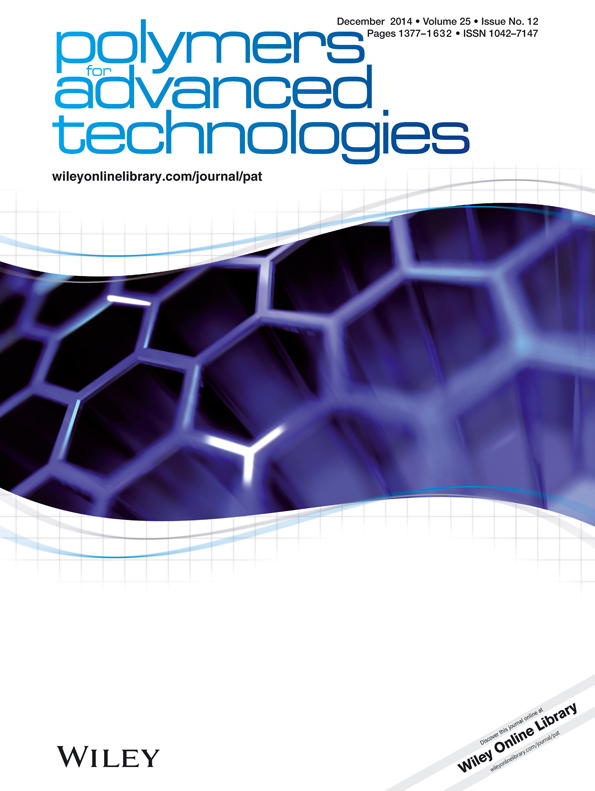The application of transition metal molybdates (AMoO4, A = Co, Ni, Cu) as additives in acrylonitrile-butadiene-styrene with improved flame retardant and smoke suppression properties
Abstract
In this paper, three different kinds of typical transition metal molybdates (AMoO4, A = Co, Ni, Cu) were synthesized via a hydrothermal method. X-ray diffraction and scanning electron microscopy (SEM) were used to characterize their structures. Then, the synthesized molybdates were incorporated into acrylonitrile-butadiene-styrene (ABS) matrix via a masterbatch-based melt blending method. SEM images showed that transition metal molybdates (AMoO4, A = Co, Ni, Cu) are homogeneously dispersed in the ABS matrix. Thermogravimetric analysis (TGA) results indicated that the introduction of these transition metal molybdates (AMoO4, A = Co, Ni, Cu) could accelerate the degradation of ABS, especially for the CuMoO4. The initial thermal degradation temperatures are decreased by 9–12°C for ABS/CoMoO4 and ABS/NiMoO4 composites. But for the ABS/CuMoO4 composite, it is decreased by 45°C. Meanwhile, the peak of heat release rate is decreased by 10%–13% for ABS/CoMoO4 and ABS/NiMoO4 composites, and it is decreased by 26% for ABS/CuMoO4 composite. Moreover, TGA/infrared spectrometry was used to investigate the smoke suppression effect of CuMoO4 in ABS indirectly; it showed that the addition of CuMoO4 inhibits the release of hydrocarbons, aromatic compounds, and CO and promotes the generation of CO2. Copyright © 2014 John Wiley & Sons, Ltd.




